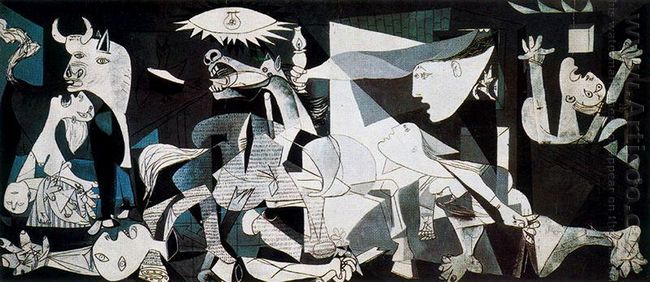One day in April 1937, Picasso who stayed in Paris in order to avoid the wars heard the news that, the small beautiful commercial town of Spain-Guernica was blasted into ruins by the bombers of German. There were full of people at that time in the streets, and the innocent residents were massacred. Picasso was shocked by the series of savage brutalities and turned his depressed mood into anger. He decided to expose these outrageous brutalities by using his brush as the weapon.

Interestingly, we could not find a similar example in the previous works had the same performance practices of this oil painting “Guernica” which was related to the war. For instance, the “Chios Massacre”, the “Raft of the Medusa” and the “May 3, Madrid”, all these works described the scenes of the wars with realism in order to record the history and bring the history alive. The realism was the accepted technique at that time, was the model of depicting large-scale war scenes. Uncharacteristically, Picasso used the abstract symbolism technique. When Guernica was exhibited in European after it was finished, it did not received any criticism, and on the contrary, gained wide praises.
Abstractionism and cubism were just becoming popular at that time, there was only a little group knew what it was. It could be said that, Picasso created the Cubism. Before the work of his “Guernica”, there was no one used the abstractionism or symbolism techniques depict such a serious theme and such a huge work. Until today, the westerners do not accept abstractionism completely. The generation of the abstractionism brought a proposition that “Arts are not necessarily to be beautiful”. This proposition marked the complete break of the modern art and traditional art. What Geurnica shows isn’t the out-and-out modernism in front of people?
Geurnica did not started with the perspectives that waking up or calling on people to arm and fight against, neither did it
could explain the tone of the work exactly:” The cries of the children, the cries of the women, the cries of the birds, the cries of the flowers, the cries of the woods and stones as well as the cries of the beds, chairs, curtains, bottles